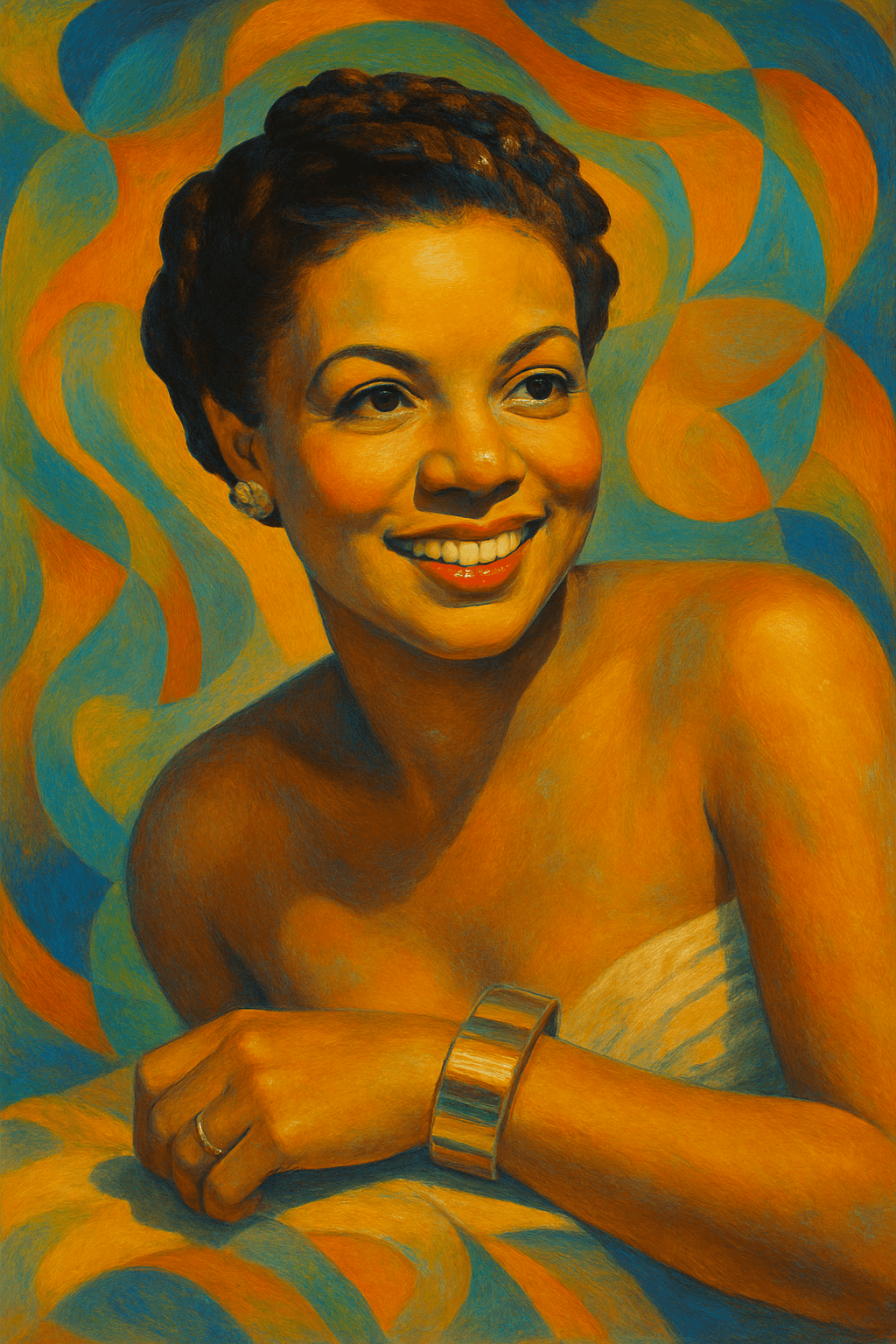IN Focus: Hazel Scott (June 11, 1920 – October 2, 1981)
Hazel Scott was a musical genius, civil rights trailblazer, and unapologetic force of elegance and defiance. Born in Trinidad in 1920 and raised in Harlem, she was a piano prodigy by age 8—so gifted she earned a scholarship to Juilliard before she was even a teenager.
By the 1940s, Hazel was headlining nightclubs, starring in films, and performing jazz renditions of Bach and Rachmaninoff with dazzling fluency. She refused to be boxed in—whether by genre, expectation, or the color line.
She was also the first Black woman to host a nationally syndicated TV show, The Hazel Scott Show, in 1950. Her visibility was revolutionary—and dangerous.
Hazel refused to play for segregated audiences during WWII USO tours. She walked off film sets when given demeaning roles. And in 1950, she testified before the House Un-American Activities Committee, defending her name and denouncing McCarthy-era fearmongering.
Shortly after, her show was canceled. Her bookings vanished. She was blacklisted.
Honor the Legacy. Wear the Story. Grab the "Hazel Scott is INerasable" t-shirt from our Legacy Collection—honor history and celebrate resilience.
INerasable: Hazel Scott's Legacy
She dared to be complex in a world that demanded simplicity—Black, female, and free. Hazel Scott is INerasable because she refused to separate her art from her dignity.
She challenged both Jim Crow and Hollywood with grace, genius, and grit. She made Bach swing, put boogie into Brahms, and refused to shrink in front of power. Her very existence was protest in a tailored gown.
The world tried to silence her brilliance—not because she lacked talent, but because she had too much of it, and insisted on using it her way.
Hazel Scott wasn’t erased for being “radical.” She was erased for being uncompromisingly excellent in a world still afraid of what Black women can do when unchained.
Art IN Context: Synchromism and the Sound of Color
Hazel Scott is rendered in Synchromism, a movement that visualized music as color and rhythm. This style—abstract, harmonic, radiant—mirrors the way Hazel made sound visible through her performances.
Synchromism is fitting because Hazel’s power was both musical and political—and this style lets her sing in color, even after the world tried to mute her.
Resources – IN Depth
Books & Articles
- Hazel Scott: The Pioneering Journey of a Jazz Pianist, from Café Society to Hollywood to HUAC – Karen Chilton
The definitive biography chronicling Scott’s rise as a musical prodigy, her role in desegregating Hollywood, and her blacklisting during the McCarthy era.
➤ https://www.goodreads.com/en/book/show/4288154-hazel-scott - Smithsonian Magazine – Hazel Scott Was More Than a Jazz Legend
A feature recognizing Scott's groundbreaking contributions to civil rights and her resistance to stereotypical roles in film.
➤ https://www.smithsonianmag.com/arts-culture/hazel-scotts-lifetime-of-high-notes-145939027/ - Hazel Scott: A Woman, a Piano and a Commitment to Justice (Change Maker Series Book 4) - Susan Engle (Author), Luthando Mazibuko (Illustrator)
Kids book that follows the life and times of Hazel Scott
➤ https://www.goodreads.com/book/show/62845948-hazel-scott
Archives
- National Museum of African American History – Hazel Scott’s Three Years Old at a Piano
Archival profile featuring Hazel Scott’s instruments and performance memorabilia.
➤ https://nmaahc.si.edu/object/nmaahc_2023.101.2 - Library of Congress – Performances and Sheet Music
Access to Hazel Scott’s music and documentation of performances.
➤ https://findingaids.loc.gov/db/search/xq/searchMfer02.xq?_id=loc.music.eadmus.mu020025&_faSection=overview&_faSubsection=did&_dmdid=d206485e6 - New York Public Library – Schomburg Center (Jazz Archives)
Contains images, playbills, and newspaper clippings related to Scott’s Harlem performances and activism.
➤ https://qa-digitalcollections.nypl.org/items/e49d5b10-414e-013d-26a9-0242ac110002?canvasIndex=7
Multimedia
- Hazel Scott: Genius Musician, Performer and Civil Rights Activist – [YouTube/Timeline World History Docs]
Mini-documentary on her musical genius and activism.
➤ https://youtu.be/faW6bDmLxm0?si=0lw7JsLFVbf25BgI - Hazel Scott Plays Two Pianos – Iconic Scene from The Heat’s On (1943)
A defining moment in Black musical cinema, showing her brilliance and artistry.
➤ https://youtu.be/1HdnjTCMzpg?si=Jman-fOGskj6vKic - The Disappearance of Miss Hazel Scott – PBS Documentary
Details her life from Hollywood success to her refusal to perform for segregated audiences and her resistance during HUAC hearings.
➤ https://www.pbs.org/wnet/americanmasters/hazel-scott-documentary/35137/
Exploring Art Styles (Synchromism)
- The Art Story – Synchromism
An introduction to the art style that pairs color and sound in abstraction—perfect for honoring Scott’s visual and musical legacy.
➤ https://www.theartstory.org/movement/synchromism/ - Oxford Art Online – Synchromism Overview
Scholarly deep dive into the artistic movement that inspired modernist painters and connects directly to musical rhythm and improvisation.
➤https://www.oxfordartonline.com/groveart/view/10.1093/gao/9781884446054.001.0001/oao-9781884446054-e-7000081769
She is IN tune. IN defiance. INerasable.


